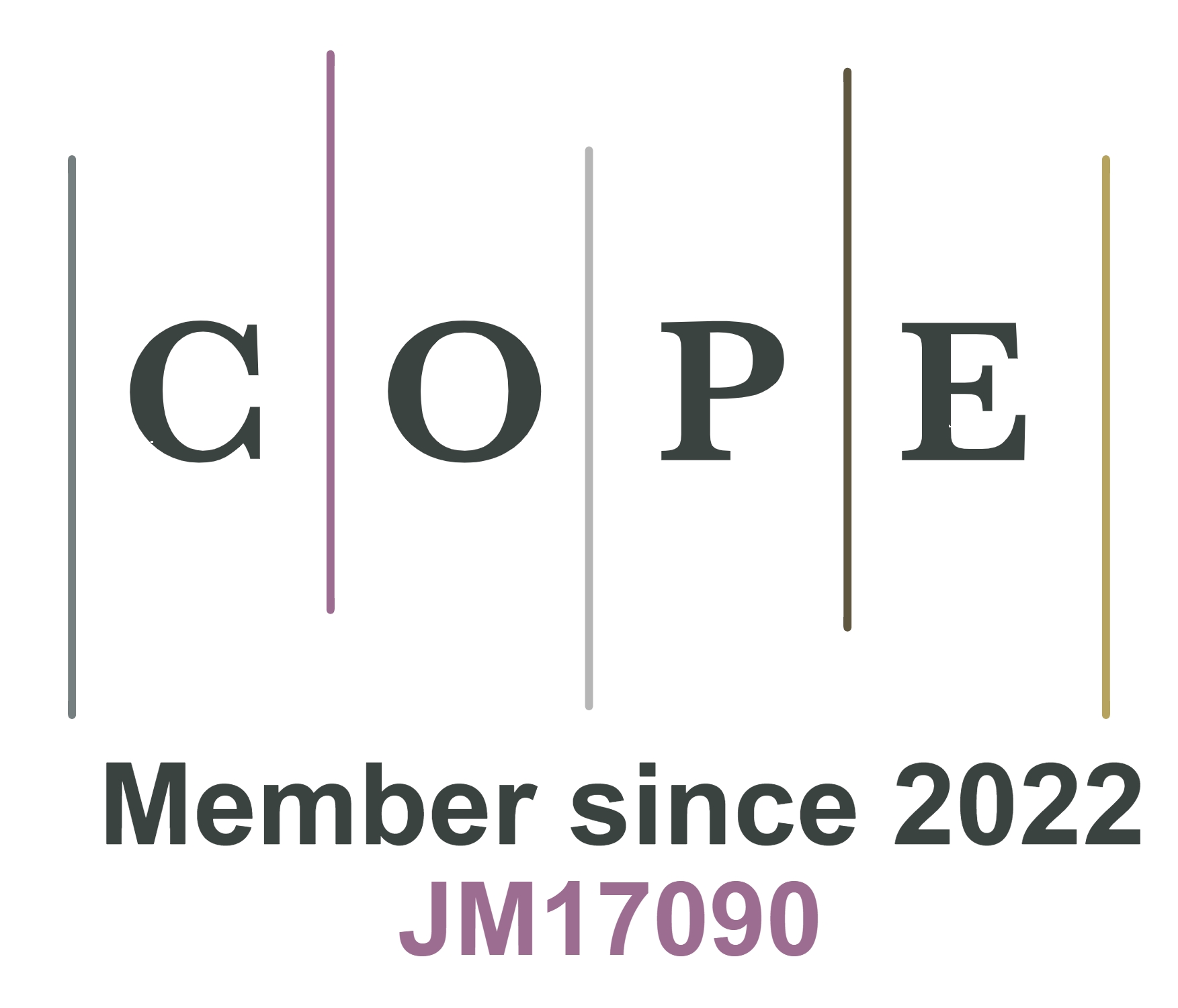A hierarchical design for thermoelectric hybrid materials: Bi2Te3 particles covered by partial Au skins enhance thermoelectric performance in sticky thermoelectric materials
Abstract
Sticky thermoelectric (TE) materials have been inversely designed to enable the mass production of flexible TE sheets through lamination or roll-to-roll processes without using electrically conductive adhesives. They have also been demonstrated as inorganic/organic hybrid materials consisting of TE inorganic particles and low-volatilizable organic solvents to exhibit Seebeck coefficients based on the TE particles and low thermal conductivities based on the organic matrix. To achieve energy harvesting of 250 µW for driving various electric devices using voltage boosters, herein, we employ p- and n-type
Keywords
INTRODUCTION
Compared with solid-state thermoelectrics (TEs), soft TEs have decisive advantages in that they can fit the various shapes of heat sources and absorb thermal energy efficiently. Due to the strong demands for energy harvesting, organics and inorganic/organic hybrids have been widely investigated as soft TE materials[1-3]. One target value for energy harvesting is 250 µW, which can be used to drive various electric devices using commercially available voltage boosters. However, when progressing to applications, there is a general difficulty in making electrical contacts between the soft TE materials and electrodes because we cannot simply apply the traditional method for solid-state TEs, i.e., soldering, to soft TEs due to the low thermostability of organics[4].
As a possible solution to making electrical contacts based on materials design, we presented a working hypothesis of sticky TE materials to contact with the electrodes by themselves and enable the mass production of flexible TE sheets through lamination or roll-to-roll processes without using electrically conductive adhesives [Figure 1][4]. The concept of sticky TE materials has been demonstrated using inorganic/organic hybrid materials of TE particles with low-volatilizable organic solvents, which exhibit Seebeck coefficients based on the TE particles and low thermal conductivities based on the organic matrix[5]. The previous result suggests that the structural parameters in the TE modules may be able to compensate for the physical property limitations in TE materials, i.e., the thermal-insulating surroundings can modulate the thermal conductivity of TE materials extrinsically. However, the first sticky TE materials only generated 2.1 µW on a hot plate of 120 °C with a 6 × 6 module because of the high interfacial electrical resistance between the TE particles, even though they are metallic like Sb (0.4 µΩm) for the p-type material and Bi (1.3 µΩm) for the n-type material. The Seebeck coefficients of these materials are also relatively small, i.e., 35 µV/K for Sb and -70 µV/K for Bi.
To enhance the TE power generation, herein, we employ p- and n-type
Our materials design is inspired by other organic devices, such as organic light-emitting diodes (OLEDs)[8] and dye-sensitized solar cells (DSCs)[9,10] [Figure 2]. OLEDs accept organic multiple layer structures consisting of electron-injection, hole-injection and light-emitting layers because single organic layers by themselves cannot easily meet all of the functional requirements, including hole and electron injection and hole-electron recombination to emit light [Figure 2A]. In DSCs, the multiple components are able to exhibit superior photovoltaic characteristics, where a dye molecule absorbs light to generate a hole-electron pair and then the I-/I3- electrolyte solution and TiO2 separately transfer the hole and electron to the external circuit [Figure 2B]. Similar to OLEDs and DSCs, sticky TE materials consist of individually-acting components, such as low-volatilizable organic solvents and sealants to suppress the thermal conduction, Au skins to reduce the electrical resistance and
Figure 2. (A) Schematic device structure of OLEDs; (B) schematic energy diagram of DSCs; (C) schematic of hierarchical design for sticky TE materials. OLEDs: Organic light-emitting diodes; DSCs: dye-sensitized solar cells.
When characterizing the as-fabricated sticky TE materials, we enclose the sticky TE materials within a single cell (diameter of 3 mm and height of 3 mm) as part of the module structure contacted with the top and bottom electrodes and surrounded with a sealant material. This is because commercial measurement systems have been designed for solid-state TE materials and not for deformable materials like sticky TE materials. Although we separately prepared an original measurement capsule to set inside the commercial measurement system, a ZEM-3 (ADVANCE RIKO, Inc.), and tried to characterize the individual thermoelectric properties, we could not perform favorable electrical analyses because the performance depends on the pressure applied on the samples. The pressure affects the contact area between the TE particles, thereby defining the interfacial electrical resistance. In contrast, in the single cell, the pressure is controlled by the volume ratio of the sticky TE materials to the cell, which is nearly one in this case. Consequently, the single-cell measurement method is of particular value for the practical design of module structures because the obtained data using the single-cell structures include the features of the contact resistance between the sticky TE materials and electrodes and the thermal insulation effects from the organic matrix.
In this study, we investigate the necessary plating amount to cover the
EXPERIMENTAL
The p- and n-type
The thermopower (V) and temperature difference (∆T) were monitored to read the stabilized value with a data logger (LR8432, Hioki E.E. Corporation, Japan), where the bottom sides were heated with an air-cooling Peltier plate (CHP-77HI, Sensor Controls Co., Ltd., Japan) and the upper side was naturally cooled by air with a fin (height of 1 cm). The resistance (R) was measured at room temperature with a digital multimeter (CDM-2000D, CUSTOM, Japan). The current-voltage (I-V) curves were obtained by plotting the V measured with the data logger after being stabilized during the input of several different I into the sticky TE modules with the current source (GS200, Yokogawa Electric Corporation, Japan) placed on the air-cooling Peltier plate set at 60 and 110 °C and cooled naturally by air with a fin (height of 2 cm). To compare the performance, a solid-state TE module of the same size (TEC1-12706, 4 cm × 4 cm) was purchased.
RESULTS AND DISCUSSION
The characteristics of the Au skin-covered
Characteristics of Au skin-covered
| Type | Size (µm) | Plating weight (wt.%) | Cross-sectional thickness (nm)* | R (Ω) | V (mV) | V2/4R (µW) | ΔT (°C) |
| p | 150-75 | 0 | - | 2.4 | 1.02 | 0.11 | 18 |
| 1.00 | - | 0.8 | 1.12 | 0.39 | 17 | ||
| 6.51 | 47 | 0.4 | 0.91 | 0.52 | 15 | ||
| 300-150 | 0 | - | 3.5 | 1.25 | 0.11 | 18 | |
| 2.76 | 66 | 0.7 | 1.62 | 0.94 | 17 | ||
| 4.91 | 109 | 0.3 | 0.51 | 0.22 | 13 | ||
| n | 150-75 | 0 | - | 2.3 | -0.87 | 0.08 | 18 |
| 0.28 | - | 1.4 | -1.15 | 0.24 | 16 | ||
| 7.23 | 25 | 0.6 | -1.09 | 0.49 | 14 | ||
| 300-150 | 0 | - | 0.5 | -1.12 | 0.13 | 18 | |
| 2.23 | 50 | 0.5 | -1.29 | 0.84 | 17 | ||
| 3.86 | 119 | 0.4 | -0.59 | 0.22 | 12 |
The behavior of the temperature dependence, namely, the heat conduction, can be explained from cross-sectional scanning electron microscopy (SEM) images [Figure 3]. Geometrically assuming the full 50 nm Au skins on spherical dense p- and n-type
Figure 3. Cross-sectional SEM images comparing the partial and full Au skins. (A) Partial Au skin: 300 µm p-type
In contrast to the partial Au skins of 2.76 and 2.23 wt.% on the 300 µm p- and n-type
Based on the single-cell characteristics, herein, we can estimate the Seebeck coefficients and electrical resistivities for the sticky TE materials in this study. Using ∆T measured from the outsides of the single-cell structures, the Seebeck coefficients of the best p- and n-type sticky TE materials are calculated to be 95.3 and -75.9 µV/K, respectively. These values are relatively comparable to the original values before usage, considering the fact that ∆T is overestimated by the temperature losses on the upper and bottom electrode sheets. The trend was also observed in the previous study (sticky Sb and sticky Bi: 12 and -40 µV/K measured under the same conditions, against the literature values of Sb and Bi: 35 and -70 µV/K)[5]. In contrast, the electrical resistivities increase by approximately two orders of magnitude. Using the measured diameters and heights of the single cells for estimating the volume of sticky TE materials that has been injected, we can simply calculate the electrical resistivities for the best p- and n-type sticky TE materials to be 1.7 and 1.2 mΩm, respectively. Note that these values include the interfacial electrical resistances with the upper and bottom electrodes because the single-cell analysis is a type of two-point probe method. Even so, this estimation suggests that there is still significant potential for improvement regarding electrical resistivity in future studies.
To demonstrate the progress of the materials design in this study, we fabricated a 6 × 6 module structure using the sticky TE materials of partial Au skin-covered p- and n-type
Figure 4. (A) External dimensions of a 6 × 6 module. (B) I-V characteristics of a 6 × 6 module at RT, 60 °C and 110 °C under natural air cooling conditions with a fin.
To compare the current achievements with other organic and inorganic/organic hybrid TE modules, which have been reported in a range of 5 µW/cm2 with ∆T = 70 °C to 4.1 mW/cm2 with ∆T = 60 °C,[3] the observed power is converted to a power density, i.e., 16 µW/cm2 with ∆T = 47.4 °C. Although some reports have achieved over two orders of magnitude higher power densities, their strategy involves the printing and postannealing at ~500 °C of
To compete with other works and solid-state TE modules in terms of power generation capacity (the capacity of TEC1-12706 is R = 2.82 Ω, V = 158 mV and V2/4R = 2.21 mW at 60 °C and R = 3.33 Ω,
At the microscale, we can survey the combination between low-volatilizable organic solvents and sealants and improve these thermal stabilities to stabilize the TE performance in order to prevent the R increase with temperature, as observed here at 110 °C. Simultaneously, we can replace the polyurethane sealants with thermal insulation foams because of the lower thermal conductivities, i.e., 0.21 W/mK for polyurethane and 0.023 W/mK for thermal insulator foams. As an initial assessment, the thermal insulation foams generated twice as large ∆T than polymer film sealants. One requirement for the foams is that the microscale pores must be a closed-cell type and smaller than the size of TE particles to serve as a sealant. Note that ∆T depends on thermal conductivity and heat flux, but thermal insulator foams also reduce the heat flux. Thus, ∆T does not seem to have a linear relation with thermal conductivity in this experimental setup. Nevertheless, the reduced heat flux contributes to improving the TE energy conversion efficiency from heat flux to electricity. The thermal insulation feature is further beneficial to make the flexible TE modules slimmer and lighter because the modules can more easily maintain ∆T even for thin sheets. Moreover, the foam feature can buffer the mechanical stress to reduce the tension on the upper and bottom electrode sheets during cyclic bending.
At the nanoscale, we may be able to solder the TE particles with the Au skins by the method of electric resistance heating. The melting points of materials decrease with the reduction of size, especially at the nanoscale, because the ratio of bonding-free surface to solidified bodies increases[15]. Thus, the electric resistance heating at the interfaces could melt the Au skins to solder TE particles with less typical damage to the organic matrix. Since the interfacial electrical resistance also depends on the contacting area at the interface, the one-time melted Au skins can fit with the shape of TE particles and reduce R. As a preliminary result, an order of magnitude reduction of R has been obtained with this method. From the perspective of material choice, Ag could be a better candidate for the conductive skins because of its lower electrical resistance (16 nΩm) and lower price (~1/100).
In addition to the expected two orders of magnitude improvement above, we can also optimize the particular property composition of the
CONCLUSIONS
Learning from OLEDs and DSCs, we have divided two of the property requirements for TE particles, namely, a high Seebeck coefficient and low interfacial resistance, into two material compositions of the
DECLARATIONS
Authors’ contributionsDesigned the study, performed data analysis and interpretation, and wrote the draft: Satoh N
Performed data acquisition and provided technical support: Otsuka M
Provided the best of knowledge and administrative support and added discussion to the received draft: Kawakita J, Mori T
Availability of data and materialsNot applicable.
Financial support and sponsorshipThis report is based on results obtained from projects, JPNP14004 and JPNP20004, subsidized by the New Energy and Industrial Technology Development Organization (NEDO), Japan. This work was also supported by Japan Science and Technology Agency Mirai Program (JPMJMI19A1) and Public/Private R&D Investment Strategic Expansion PrograM (PRISM), Japan.
Conflicts of interestAll authors declared that there are no conflicts of interest.
Ethical approval and consent to participateNot applicable.
Consent for publicationNot applicable.
Copyright© The Authors 2022.
REFERENCES
1. Petsagkourakis I, Tybrandt K, Crispin X, Ohkubo I, Satoh N, Mori T. Thermoelectric materials and applications for energy harvesting power generation. Sci Technol Adv Mater 2018;19:836-62.
2. Akinaga H. Recent advances and future prospects in energy harvesting technologies. Jpn J Appl Phys 2020;59:110201.
3. Nandihalli N, Liu CJ, Mori T. Polymer based thermoelectric nanocomposite materials and devices: fabrication and characteristics. Nano Energy 2020;78:105186.
4. Satoh N, Otsuka M, Ohki T, et al. Organic π-type thermoelectric module supported by photolithographic mold: a working hypothesis of sticky thermoelectric materials. Sci Technol Adv Mater 2018;19:517-25.
5. Satoh N, Otsuka M, Sakurai Y, et al. Sticky thermoelectric materials for flexible thermoelectric modules to capture low-temperature waste heat. MRS Advances 2020;5:481-7.
6. Biswas K, He J, Blum ID, et al. High-performance bulk thermoelectrics with all-scale hierarchical architectures. Nature 2012;489:414-8.
7. Liu Z, Mori T. Nanostructured bulk thermoelectric materials for energy harvesting. In: Wakayama Y, Ariga K, editors. System-materials nanoarchitectonics. Tokyo: Springer; 2022. pp. 199-231.
8. Satoh N, Cho JS, Higuchi M, Yamamoto K. Novel triarylamine dendrimers as a hole-transport material with a controlled metal-assembling function. J Am Chem Soc 2003;125:8104-5.
9. Satoh N, Nakashima T, Yamamoto K. Metal-assembling dendrimers with a triarylamine core and their application to a dye-sensitized solar cell. J Am Chem Soc 2005;127:13030-8.
10. Satoh N, Han L. Chemical input and I-V output: stepwise chemical information processing in dye-sensitized solar cells. Phys Chem Chem Phys 2012;14:16014-22.
11. Liu Z, Sato N, Gao W, et al. Demonstration of ultrahigh thermoelectric efficiency of ~7.3% in Mg3Sb2/MgAgSb module for low-temperature energy harvesting. Joule 2021;5:1196-208.
12. II-VI Marlow. Thermoelectric generator (TEG) modules. Available from: https://ii-vi.com/product/thermoelectric-generator-teg-modules/ [Last accessed on 16 August 2022].
13. Liu Z, Gao W, Oshima H, Nagase K, Lee CH, Mori T. Maximizing the performance of n-type Mg3Bi2 based materials for room-temperature power generation and thermoelectric cooling. Nat Commun 2022;13:1120.
14. Kim SJ, We JH, Cho BJ. A wearable thermoelectric generator fabricated on a glass fabric. Energy Environ Sci 2014;7:1959.
15. Satoh N, Nakashima T, Yamamoto K. Metastability of anatase: size dependent and irreversible anatase-rutile phase transition in atomic-level precise titania. Sci Rep 2013;3:1959.
Cite This Article
How to Cite
Download Citation
Export Citation File:
Type of Import
Tips on Downloading Citation
Citation Manager File Format
Type of Import
Direct Import: When the Direct Import option is selected (the default state), a dialogue box will give you the option to Save or Open the downloaded citation data. Choosing Open will either launch your citation manager or give you a choice of applications with which to use the metadata. The Save option saves the file locally for later use.
Indirect Import: When the Indirect Import option is selected, the metadata is displayed and may be copied and pasted as needed.























Comments
Comments must be written in English. Spam, offensive content, impersonation, and private information will not be permitted. If any comment is reported and identified as inappropriate content by OAE staff, the comment will be removed without notice. If you have any queries or need any help, please contact us at support@oaepublish.com.